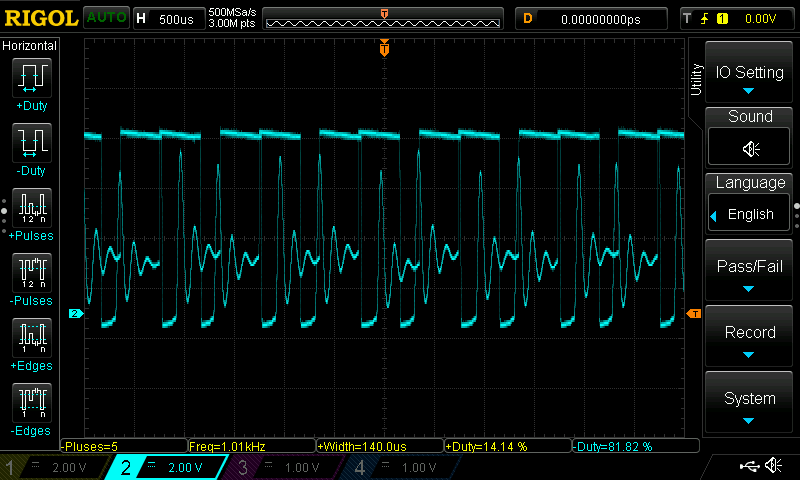Hello, I am using a product that has DRV8833's installed (I did not design the product), with AOUT and BOUT ganged to double the output current and drive one motor from one DRV8833. I have been noticing unusual output waveforms from the channels, and when I took the device apart, I see that AOUT1 and AOUT2 are connected, and BOUT1 and BOUT2 are connected-- this is not the way ganging is shown in the datasheet (AOUT1 and BOUT1 are connected, and AOUT2 and BOUT2 are connected).
Could the way this manufacturer designed the product (incorrectly ganging the outputs) be causing the odd waveforms?
Thanks!
--Rob


